A Brief History of Christmas Villages from Family Christmas OnlineTMFolks who set out ceramic or resin collectible holiday villages today may not make the connection, but they are actually following a tradition that goes back at least to the Renaissance. Each generation and several cultures and traditions have added to the mix, including European nativity displays, Pennsylvania's Moravian "putz" displays, and the toy train industry. If you enjoy setting out a holiday village of any kind, we think you will enjoy learning about the deep roots of this multicultural tradition.Topics we discuss include:
Nativities - the First Christmas VillagesThe earliest "Christmas Villages" were probably Nativity displays in homes and churches. Christians have been making and displaying statues that represent the birth of Jesus and the Magi's visit since the thirteenth century, if not earlier.
In Provence (France), nativities have long been adding figures representing nearly every member of the community. The University of Dayton's collection of these Of course carving, painting, and arranging even the non-Bible characters were considered "devotional" activities. But it's obvious that for centuries, household nativities have been providing families with recreational and decorative outlets that are not so far removed from those of modern ceramic, porcelain, and resin villages. Nativity-Centered Displays in North AmericaMany Roman Catholic families of North America have been setting up nativity displays since their ancestors arrived. My own mother told me that in the 1930s, her German-speaking father would set up elaborate landscapes and communities around the stable, a tradition passed down from his German Catholic immigrant parents. In our home, Mom would surround the stable with little fake trees and "frozen lakes" made of aluminum foil or small mirrors. But she would remark that her family used to set out much more "scenery." German-American "Putzes"When I started doing a little research into related traditions, I realized that my Catholic ancestors weren't the only culture that built large displays around the Nativity. In areas settled by German-speaking Moravians, the seasonal "communities" were called "putzes," from the German word for "put," "set up," or "putter." Moravian families (and eventually many others) would set out displays early in the season and tweak, or "putz around" with them right up until Christmas. Eventually those scenes included buildings, figures, and accessories that must have "clashed" in every way with the Nativity display itself. But quantity nearly always overrode such considerations as scale or era, and each family took pride in their ability to arrange an impressive display.
In the late 1920s, some of the Japanese cardboard houses started arriving with holes in the back to accommodate C-6 light bulb strands. Soon, setting up illuminated villages with those little cardboard houses was a tradition in North American homes from many cultural backgrounds. Although most of the putz houses and "glitterhouses" that have survived to this day were made in Japan, many were made in Germany and a few were made in this country as well. (For more information about the glittered Japanese houses and their kin, check out the Big Indoor TrainsTM article "What is a Glitterhouse?") Christmas Railroads and Train GardensThe third piece of the traditional Christmas Village arrived in the early 1900s, when toy trains that actually ran around a circle of track became available. In the early days, a good train set cost as much as a household appliance, so they were often given as Christmas presents. Once the presents were opened, setting the railroad up around the Christmas tree (usually the only clear spot left on the floor) seemed "natural." But next year, you had better believe that the train set went up before Christmas Day, sometimes weeks before.
Soon Christmas tree railroads had assimilated the structures and accessories from the "putz" tradition. Toys (such as farm animals) and Christmas decorations (such as reindeer and Santas) often found their ways to the display as well.
In the eastern United States, these seasonal displays were often called "train gardens" or "Christmas gardens," even though there were almost never any live plants. (For more information about Christmas season train and town displays, see our article "What do Trains Have to do With Christmas?") Sadly, by the late 1960s, many factors had made large, month-long Christmas displays of trains and towns impractical, or at least outmoded for most families. Trains were getting too small to put around the tree, houses no longer had parlors, and living rooms were being permanently rearranged into shrines for the television sets. In addition, nativities were going out of vogue in an increasingly secular society. So the "troika" of trains, towns, and nativity displays was broken, apparently for good. Dept. 56® Reinvigorates Christmas VillagesThen, in 1976, Department 56 reversed this trend by introducing six ceramic buildings that caught holiday decorators' attention, revived Christmas villages, and started an industry. Those shiny, snow-dappled buildings were the start of a series that Dept. 56 now calls the "Original Snow Village®." It wasn't long before Dept. 56 added more buildings, nor before imitators sprung up. Soon folks across North America were setting up holiday village displays much like their grandparents did, although the results weren't as eclectic as earlier displays - many families restricted their displays to items manufactured by Dept. 56 (and sometimes by their imitators). In 1984, Dept. 56 introduced its "Heritage Village Collection®," which now includes several "series" such as "Christmas in the City®." The Heritage Village buildings are made of porcelain, not ceramic, and tend to be a little less "cutesy" than the "Original Snow Village" buildings, but they attracted a new crowd of collectors and imitators. (For a little more background on Dept. 56®, visit our article: "Notes on Dept. 56® Village Collections.") Hawthorne Village®The folks who run the Bradford Exchange soon introduced the Hawthorne Village® lines of collectible villages that resemble the Dept. 56 Heritage Village Collection® series in several ways. Though the earliest villages were ceramic or porcelain, later villages depend more on resin. Resin structures use painted-on finishes instead of baked-in glazes like most Dept. 56® buildings. Still, using resin allows more fine detail to be shown and faster development time for new collections, which Hawthorne Village® churns out at an astonishing rate. As an example, they are currently making at least eight village collections based on the work of artist Thomas Kinkade®, eight Halloween-themed collections, and dozens more.
An even bigger difference between Hawthorne Village® and Dept 56® is that Hawthorne Village collections are sold almost exclusively through "subscription." That is, you buy the first in the series and order the rest, and you get and pay for one piece about every four weeks. Although this confuses some buyers, most folks who get the first one like it so much they stay subscribed for several more pieces, if not for the rest of the series. (For a little more background on Hawthorne Village®, visit our article: "Notes on Hawthorne Village®.") Lemax In 1990, Lemax began offering a collection of lighted houses. Although most of their early collections offered typical Victorian Christmas village buildings and accessories, they have also added extensive circus, seaside, north pole, and Halloween collections. A number of folks try to gather complete collections, which can be a challenge because Lemax also sells different items through different channels, including department, craft, and hardware stores. In 1990, Lemax began offering a collection of lighted houses. Although most of their early collections offered typical Victorian Christmas village buildings and accessories, they have also added extensive circus, seaside, north pole, and Halloween collections. A number of folks try to gather complete collections, which can be a challenge because Lemax also sells different items through different channels, including department, craft, and hardware stores.
Lemax structures are often just a bit larger than similar Dept. 56 or Hawthorne Village buildings, although they follow the Dept. 56 example of keeping different buildings close to the same size by shrinking buildings that "should have been" bigger, and enlarging buildings that "should have been" smaller. Most Lemax products are very well designed and a good value. However, quality control issues often affect details like the faces of figures. So if you are interested in a Lemax figure or accessory, you may want to compare two or three to get the one with the most consistent paint job. St. Nicholas Square and Others Since 1976, many other companies have gotten in and out of the ceramic Christmas village business. One company with longevity and gradually improving quality is the Kohls® department store chain. They have sold privately contracted ceramic and resin villages and accessories under the name St. Nicholas Square for several years. Many of the buildings and figures look like they came from early-to-mid twentieth-century North America. Since 1976, many other companies have gotten in and out of the ceramic Christmas village business. One company with longevity and gradually improving quality is the Kohls® department store chain. They have sold privately contracted ceramic and resin villages and accessories under the name St. Nicholas Square for several years. Many of the buildings and figures look like they came from early-to-mid twentieth-century North America.
The St. Nicholas Square designs are not generally quite as large or quite as original as Dept. 56, Hathorne Village, or Lemax collections. However, their quality is more consistent than most of the "off-brand" products and seems to be improving each year. Many department stores, hardware stores, and specialty stores (including Jo Anne fabrics) bring in ceramic village houses to sell before Christmas. In some cases the accessories are actually Lemax products rebranded for a house brand "collection." In most cases the quality of the house brand "collections" is a little lower, and sometimes much lower even than St. Nicholas Square. Hardly anybody actually collects these self-labeled "collections" the way they do the better brands. On the other hand, I almost always stop and look; you never know when one building or accessory will take you by surprise or somehow supplement your "official collections. And I often see both die-hard village collectors and model railroaders doing the same thing. Do-It-Yourself OptionsI have to confess that I currently have more ceramic, porcelain, and resin buildings than I'll ever have room to set up at once, and I'm not even a serious collector. But one thing that gets me excited these days is that the Christmas village/putz/Christmas garden tradition is starting to come full circle. Not only are fans of putzes, like "Papa" Ted Althof, studying and restoring the vintage "putz" houses. But a rapidly-growing circle of folks interested in these traditions are getting back to "roots" by building their own projects. Some of our sister sites have been able to support this growing hobby by providing free, downloadable plans, graphics, and instructions for dozens of inexpensive, easy projects on our sister sites. Here are a few starting points.
ConclusionAnd contact us with any questions or suggestions you have in the meantime.Paul and Shelia Race To return to the Family Christmas OnlineTM Home Page, click here. Related Links
|





|
Note: Family Christmas OnlineTM is a trademark of Breakthrough Communications(tm) (www.btcomm.com).
All information, data, text, and illustrations on this web site are
Copyright (c) 2006, 2007 by Paul D. Race.
Reuse or republication without prior written permission is specifically
forbidden.
Family Christmas Online(tm) is a participant in the Amazon Services LLC Associates Program, an affiliate advertising program designed to provide a means for sites to earn advertising fees by advertising and linking to amazon.com.
For more information, please contact us
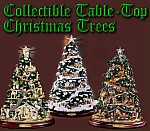
| 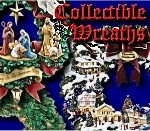
| 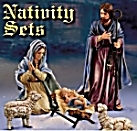
| 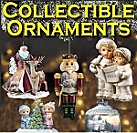
| 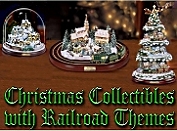
|